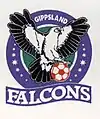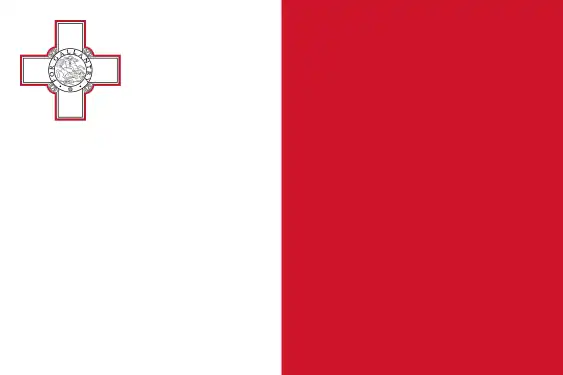| Full name | Falcons 2000 Soccer Club | ||
|---|---|---|---|
| Nickname(s) | Morwell | ||
| Founded | 1961, 2000 (re-founded) | ||
| Ground | Latrobe City Stadium | ||
| Capacity | 12,000 | ||
| Chairman | Tony Salvatore | ||
| Manager | Mark Cassar | ||
| League | Latrobe Valley Soccer League | ||
|
| |||
Falcons 2000 Soccer Club is an Australian semi-professional soccer club based in the regional Victorian city of Morwell. Founded in 1961 by the local Italian community, the club has participated in the Victorian state league system at multiple levels, and in the defunct National Soccer League. After being re-established in 2000, the club currently participates in the Latrobe Valley Soccer League.
The club is one of the most successful in the Gippsland region, being the only club to have been crowned Victorian state premiers, on two occasions, and to have been the only rural club in Victoria to have participated at a national level. Since its inception, the club has played under multiple names, consisting of Gippsland Falcons SC, Eastern Pride, and being latterly known as the Morwell Falcons. The club bears its present name after its financial re-establishment in 2000.
History
 Eastern Pride Logo
Eastern Pride Logo Gippsland Falcons Logo
Gippsland Falcons Logo
The club was formed in 1961 by Italian migrants as the Italian Australian Social Club of Gippsland (IASCO), and initially played in the La Trobe soccer league.[1]
In 1964, the club changed its name to Morwell Falcons as a result of a sponsorship arrangement with the Ford Motor Company.[2] Morwell joined the wider ranks of the Victorian leagues in 1974, and quickly rose up the divisions reaching the Victorian State League in 1982, and winning the title in 1984 under the tutelage of famed Irish coach and ex-Fulham icon Jimmy Dunne.
This allowed them to apply for the NSL's Southern Conference, but the club declined the offer.[1] It was that same year that Jim McLean was the named as the Victorian Premier League Player of the Year (known as the Rothmans Medal at the time).
Despite the triumph in 1984, heartbreak would follow in 1985 as the slow-starting Falcons finished the season with a sensational flourish to win seven of their last eight matches - including a 1-0 victory over eventual league champions Croydon City. Despite the barnstorming run, Croydon - now with Falcons' 1984 league champion Billy Whiteside in goal - held their nerve to claim the league title with a 5-1 away win over Maribyrnong Polonia on the final day of the season.
Dunne left the club in 1986 and the club moved on to Scottish coach Bobby McLachlan, who stayed for eight years.
In 1989, Morwell won its second Victorian championship, pipping Brunswick Juventus to the title by a solitary point. However, but this time the Falcons failed to progress to the top flight after losing 5–2 on aggregate in a two-legged tie against South Australian champion West Adelaide.[1]
The club eventually joined the NSL's ranks in season 1992/93 as a replacement for Preston,[1] but their stay was quite unsuccessful, making the finals only once in season 1994/95 after finishing fourth. The club thereafter always found itself near the bottom of the table, and late in season 2000/01 the club folded.[3]
While the club officially disbanded in 2001, Falcons 2000[4] were created as an offshoot club, and currently compete in the Latrobe Valley Soccer League.[5]
1984 Victorian State Championship winning season

Despite finishing fourth in their first year in the Victorian State Men's League in 1982, the Falcons slipped to the 10th in 1983 - although expectations for the 1984 season were boosted for Latrobe Valley-based club when they recruited some key players, including Northern Irish youth international Gerry Clarke, Irish striker Stephen Moore and dynamic Englishman Russell Athersych.
While Clark went on to become something of an icon in Gippsland football in later life, coaching numerous local clubs, Moore's prowess in front of goal in 1984 - scoring 17 goals in 26 games - proved why he was considered the league's best strikers.
The Falcons won just one of their first five games but a 5-0 thumping of Knox City in round six ignited their season and they then claimed victory in six of their next seven matches to climb to the top of the league.
A series of powerful victories - including a 6-0 thrashing of Knox City and a 4-0 hammering of St Albans - meant the Falcons were in the box seat to claim the highest honour in Victorian football, with the signing of Doveton striker Iain Stirton after round 14 proving to be an inspired choice after he was relegated to the Doveton bench by coach Hammy McMeechan. Stirton had an extraordinary impact, netting 10 goals in his first seven games for Morwell and adding another to finish with 11 for the season.
Leading the league by two points, the Falcons needed only a draw in their final match against Albion Rovers to claim the title. A 0-0 draw at Selwyn Reserve in Albion ensured the Falcons would win their first ever state championship.
The Falcons then went on to win the post-season State League Cup, defeating Fawkner 9-8 on penalties in the semi-final before claiming a 1-0 victory over Maribyrnong Polonia in the final.
1989 Victorian State Championship winning season
The Falcons entered the 1989 Victorian State League having finished the 1988 season in 10th position, 11 points behind league champions Heidelberg United - who were subsequently promoted to the National Soccer League.
The second and third placed teams of 1988 - St Albans and Croydon City - were widely expected to contend for the 1989 title but the Falcons shocked the football world to soar back into contention for the league title, largely thanks to the goals of Darko Basara (11 goals) and New Zealand international New Zealand international Billy Wright (eight goals) - with Northern Irish import Ron Manley proving an astute mid-season pick-up, grabbing six goals in 13 games. Popular captain Jim McBride also hit six goals in 28 games and club veteran Sean Byrne - who did not miss a game all season - added five of his own.
After a critical slip up by equal-first placed Brunswick Juventus on the penultimate day of the season, losing 2-1 to Northcote City, the Falcons moved a point clear heading into the final round thanks to a crucial 0-0 draw at home to Frankston Pines.
Holding to their league lead by a point, the Falcons needed only a win against Ringwood City in the final game of the season to ensure they would be crowned champions for the second time.
In one of the Falcons' finest ever displays, Manley began the rout in the 13th minute before Roy Walsh doubled the Falcons' advantage just before half-time. Wright all but sealed the championship with his effort two minutes after the break before captain Jim McBride sent the capacity crowd at North Crinigan Reserve into a frenzy by making it 4-0 in the final minute.
In October, Morwell had a barnstorming Dockerty Cup run, highlighted by a 2-0 victory over NSL club Footscray JUST - who fielded a star-studded team including Socceroos' trio Mehmet Durakovic, Oscar Crino and Joe Palatsides - in the quarter-finals at Heidelberg. However, the Falcons ran out of steam in the semi-finals, losing 5-0 to eventual runner-up Altona Gate.
Honours
|
|
Notable former players
.svg.png.webp) Adam Griffiths
Adam Griffiths.svg.png.webp)
 Archie Thompson
Archie Thompson
 Billy Wright
Billy Wright
.svg.png.webp) Brian Bothwell
Brian Bothwell.svg.png.webp) Ernie Tapai
Ernie Tapai.svg.png.webp) Eugene Galekovic
Eugene Galekovic.svg.png.webp) Levent Osman
Levent Osman Jeff Hopkins
Jeff Hopkins Alun Evans
Alun Evans Aleksandar Đorđević
Aleksandar Đorđević Mark Foy
Mark Foy.svg.png.webp) Eddie Krncevic
Eddie Krncevic
.svg.png.webp) John Hutchinson
John Hutchinson.svg.png.webp) John Markovski
John Markovski.svg.png.webp) Steve Mautone
Steve Mautone.svg.png.webp)
 Mehmet Duraković
Mehmet Duraković.svg.png.webp) Naum Sekulovski
Naum Sekulovski Sean Douglas
Sean Douglas
 Sean Byrne
Sean Byrne.svg.png.webp) Scott McDonald
Scott McDonald.svg.png.webp) Scott Miller
Scott Miller.svg.png.webp) Warren Spink
Warren Spink.svg.png.webp) Eddie Krncevic
Eddie Krncevic.svg.png.webp) Bobby Despotovski
Bobby Despotovski.svg.png.webp) Marcus Stergiopoulos
Marcus Stergiopoulos
.svg.png.webp) Michael Reda
Michael Reda.svg.png.webp)
 Jimmy Mackay
Jimmy Mackay Sandy Robertson
Sandy Robertson
References
- 1 2 3 4 Howe, Andrew. "History of Gippsland Falcons". OzFootball. Retrieved 15 May 2018.
- ↑ Hay, Roy (4 May 2009). "Pride of the Valley - The Rise And Fall Of Morwell Falcons" (PDF). Goal! Weekly. p. 11. Retrieved 15 May 2018.
- ↑ "NSL Clubs – Gippsland Falcons". OzFootball. Retrieved 23 February 2015.
- ↑ https://www.facebook.com/falcons2000/
- ↑ Hassett, Sebastian (1 December 2011). "When the Falcons took flight, a region soared with them - but crash was coming". The Sydney Morning Herald. Fairfax Media. Retrieved 13 June 2018.